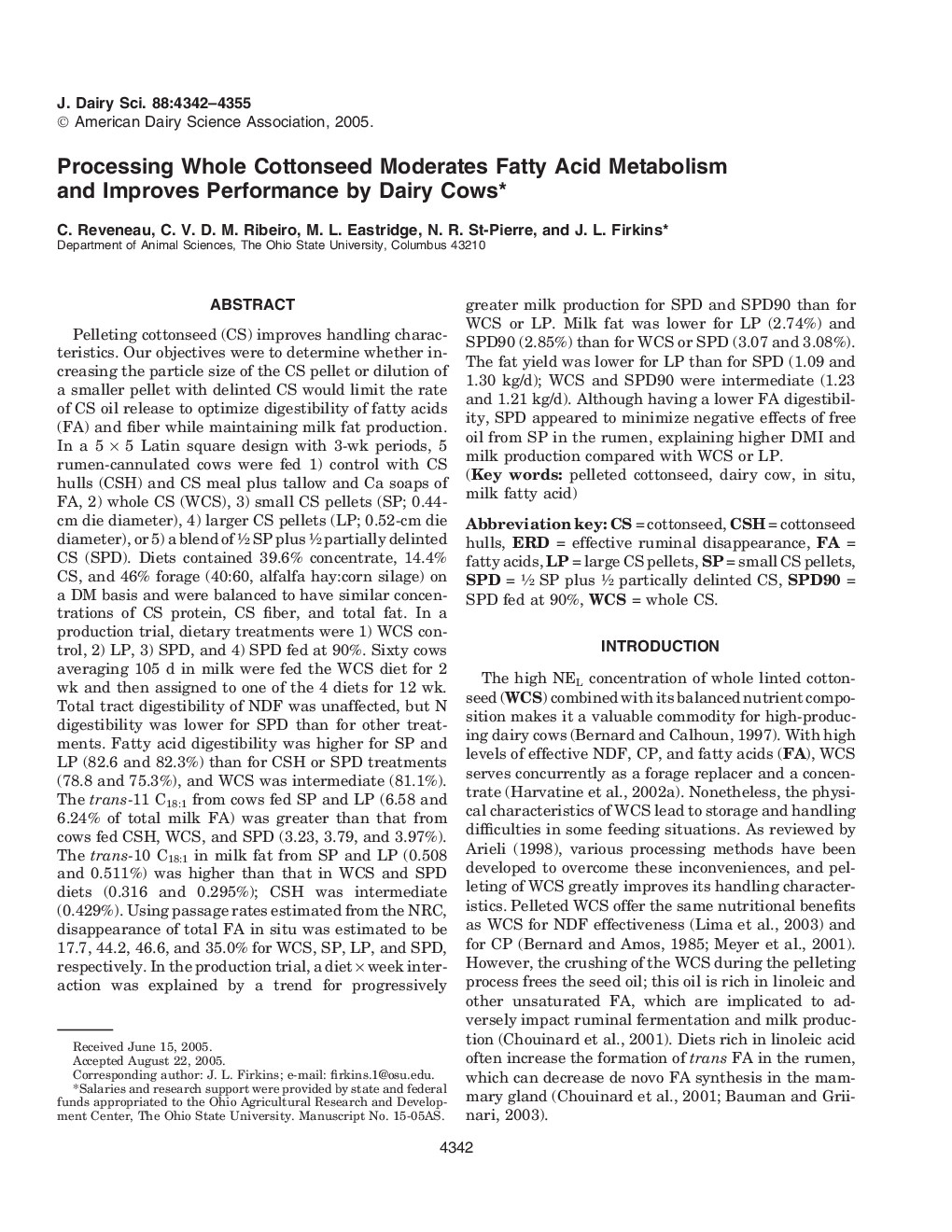| Article ID | Journal | Published Year | Pages | File Type |
|---|---|---|---|---|
| 2441677 | Journal of Dairy Science | 2005 | 14 Pages |
Pelleting cottonseed (CS) improves handling characteristics. Our objectives were to determine whether increasing the particle size of the CS pellet or dilution of a smaller pellet with delinted CS would limit the rate of CS oil release to optimize digestibility of fatty acids (FA) and fiber while maintaining milk fat production. In a 5 × 5 Latin square design with 3-wk periods, 5 rumen-cannulated cows were fed 1) control with CS hulls (CSH) and CS meal plus tallow and Ca soaps of FA, 2) whole CS (WCS), 3) small CS pellets (SP; 0.44-cm die diameter), 4) larger CS pellets (LP; 0.52-cm die diameter), or 5) a blend of 12 SP plus 12 partially delinted CS (SPD). Diets contained 39.6% concentrate, 14.4% CS, and 46% forage (40:60, alfalfa hay:corn silage) on a DM basis and were balanced to have similar concentrations of CS protein, CS fiber, and total fat. In a production trial, dietary treatments were 1) WCS control, 2) LP, 3) SPD, and 4) SPD fed at 90%. Sixty cows averaging 105 d in milk were fed the WCS diet for 2 wk and then assigned to one of the 4 diets for 12 wk. Total tract digestibility of NDF was unaffected, but N digestibility was lower for SPD than for other treatments. Fatty acid digestibility was higher for SP and LP (82.6 and 82.3%) than for CSH or SPD treatments (78.8 and 75.3%), and WCS was intermediate (81.1%). The trans-11 C18:1 from cows fed SP and LP (6.58 and 6.24% of total milk FA) was greater than that from cows fed CSH, WCS, and SPD (3.23, 3.79, and 3.97%). The trans-10 C18:1 in milk fat from SP and LP (0.508 and 0.511%) was higher than that in WCS and SPD diets (0.316 and 0.295%); CSH was intermediate (0.429%). Using passage rates estimated from the NRC, disappearance of total FA in situ was estimated to be 17.7, 44.2, 46.6, and 35.0% for WCS, SP, LP, and SPD, respectively. In the production trial, a diet × week interaction was explained by a trend for progressively greater milk production for SPD and SPD90 than for WCS or LP. Milk fat was lower for LP (2.74%) and SPD90 (2.85%) than for WCS or SPD (3.07 and 3.08%). The fat yield was lower for LP than for SPD (1.09 and 1.30 kg/d); WCS and SPD90 were intermediate (1.23 and 1.21 kg/d). Although having a lower FA digestibility, SPD appeared to minimize negative effects of free oil from SP in the rumen, explaining higher DMI and milk production compared with WCS or LP.
